#flutter widget
Explore tagged Tumblr posts
Text
Flutter has significantly grown as a powerful framework in the realm of app development. Benefits of Flutter come in myriad ways both for the developers and businesses alike. Flutter has succeeded in gaining imperative traction that has made it a top-choice for building applications that benefits the cross-platform mobile applications as well.
0 notes
Text
How to Hire Flutter Developers? [Includes 50 Questions For the Interview] by Kody Technolab Ltd
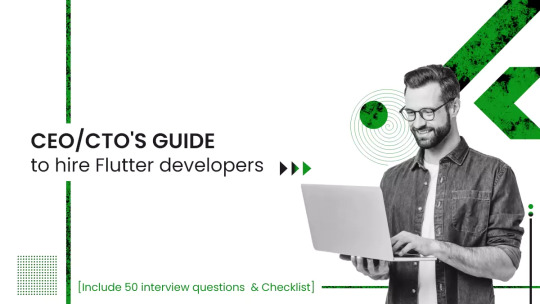
In the rapidly evolving realm of mobile application development, Flutter has emerged as a frontrunner, thanks to its ability to facilitate the creation of natively compiled applications for mobile, web, and desktop from a single codebase. This Google-developed UI toolkit has gained significant traction among businesses looking to streamline their app development processes. Consequently, the demand for skilled Flutter developers has skyrocketed, prompting companies to refine their hiring strategies. If you’re on the lookout to hire Flutter developers, this blog post, brought to you with insights from Kody Technolab Ltd, a leading Flutter Development Company in India, will serve as your comprehensive guide.
Why Hire Flutter Developers?
Before diving into the hiring process, it’s crucial to understand the value Flutter developers bring to your project. They possess the expertise to build high-performance, visually appealing applications that provide a seamless user experience across multiple platforms. By hiring dedicated Flutter app developers, businesses can significantly reduce development time and costs while ensuring their applications are scalable, maintainable, and aligned with their strategic goals.
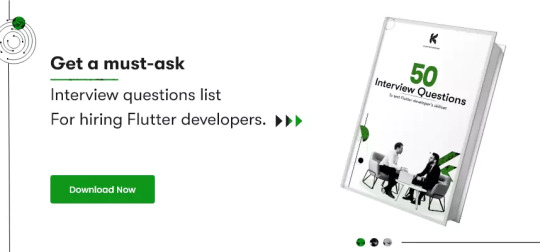
Where to Find Flutter Developers?
Flutter developers for hire can be found across various platforms, including freelance websites, professional networks, and specialized Flutter development companies. Hiring Flutter developers from India offers a blend of technical proficiency, cost-effectiveness, and flexibility, making it a favored option for many businesses globally. Companies like Kody Technolab Ltd not only provide Flutter development services but also allow businesses to hire dedicated Flutter app developers, ensuring projects are handled by experts tailored to their specific requirements.
How to Evaluate Flutter Developers?
Evaluating potential hires is a critical step in ensuring you get the right talent for your project. This involves assessing their technical skills, project experience, and soft skills. When you hire Flutter app developers, consider their proficiency in Dart (the programming language used by Flutter), their understanding of Flutter widgets, and their experience in building and deploying cross-platform apps. Additionally, evaluating their problem-solving abilities, communication skills, and adaptability to changing project demands is equally important.
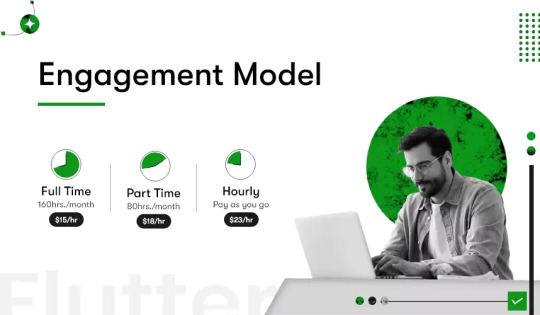
50 Questions for the Interview
To streamline your interview process, here’s a comprehensive list of questions you can ask when hiring Flutter developers:
Basic Understanding:
What is Flutter and why use it over other frameworks?
Explain the architecture of Flutter.
What is Dart and its significance in Flutter development?
Technical Proficiency:
How do you manage state in Flutter applications?
Describe the widget lifecycle in Flutter.
What are keys in Flutter and why are they important?
Explain hot reload and hot restart. What’s the difference?
Flutter UI and Design:
How do you create custom widgets in Flutter?
Discuss the role of ThemeData in Flutter.
How do you handle responsiveness in Flutter applications?
Flutter and External Resources:
Explain how you integrate REST APIs in a Flutter app.
How do you implement local databases in Flutter? Discuss SQLite and Hive.
Describe the process of adding third-party plugins to a Flutter project.
Advanced Flutter Concepts:
How do you use streams and futures in Flutter?
Explain the concept of BLoC (Business Logic Component) in Flutter.
What are mixins in Dart, and how do they benefit Flutter development?
Testing and Deployment:
How do you test Flutter applications?
Discuss the process of deploying a Flutter app to the iOS App Store and Google Play Store.
Experience and Projects:
Share a challenging project you’ve worked on. How did you address the challenges?
How do you stay updated with new developments in Flutter?
Soft Skills:
How do you manage tight deadlines in project development?
Describe a situation where you had to work closely with designers. How did you ensure effective collaboration?
This list is not exhaustive but covers the essential areas to help you gauge the competency and fit of potential Flutter developers for your project.
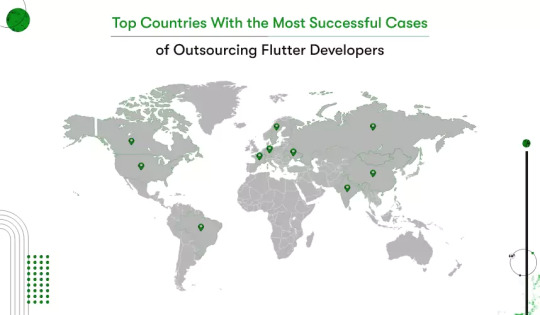
Conclusion
Hiring the right Flutter developer is a strategic decision that can significantly impact the success of your mobile application development project. By focusing on a combination of technical skills, project experience, and soft skills, you can identify candidates who are well-suited to meet your project’s requirements. Kody Technolab Ltd, with its extensive experience in Flutter application development services, stands as a testament to the potential of hiring skilled Flutter developers to bring your app ideas to life. Whether you’re looking to hire Flutter app developers, full-stack Flutter developers, or remote Flutter programmers, the guidelines and questions outlined in this post will assist you in making informed hiring decisions.
Remember, the key to successful Flutter development lies not only in technical expertise but also in a developer’s ability to adapt, communicate effectively, and understand the broader business context of their work. Choose wisely, and your Flutter project will be well on its way to success.
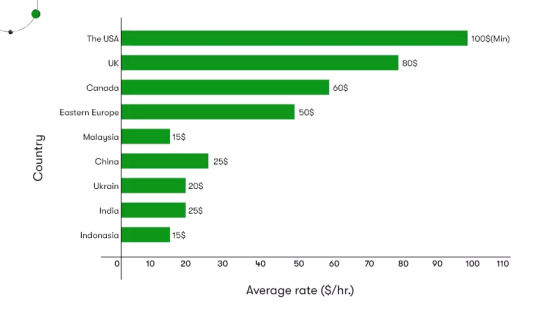
1 note
·
View note
Text
#binder flutter state management example#binder flutter state management#flutter state management library#Flutter Agency#Flutter Agency USA#Flutter widget#State management in Flutter
0 notes
Text
#Best flutter app development company#Custom Widgets in Flutter#Enhancing flutter app performance#Flutter widget customization techniques#implementing custom widgets in Flutter#Performance Optimization in Flutter#Widget Customization in flutter
0 notes
Text
Understanding Flutter Widgets: Basics and Beyond
Learn the basics of Flutter widgets and explore advanced concepts. This guide covers stateless and stateful widgets, layout and interactive widgets, and best practices.
Introduction Flutter has revolutionized mobile app development by allowing developers to create high-performance, visually appealing applications with a single codebase. At the heart of Flutter is the widget, the building block that defines the structure, layout, and behavior of your application. This guide will help you understand the basics of Flutter widgets and explore advanced concepts to…
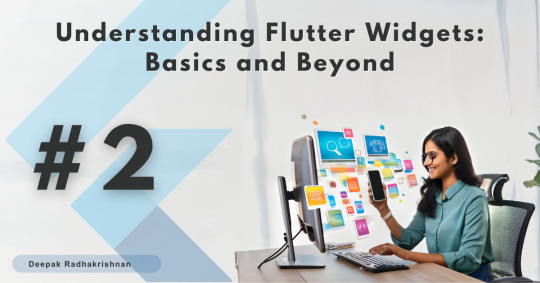
View On WordPress
#best practices#Flutter#Interactive Widgets#Layout Widgets#Mobile Development#Stateful Widgets#Stateless Widgets#UI Design#Widgets
0 notes
Video
youtube
Exploring the Potential of Flutter on Embedded Devices: A Game Changer
#youtube#Flutter EmbeddedDevices UIDevelopment CrossPlatform ResourceOptimization UserExperience Widgets Animation Performance HardwareIntegration Pl
0 notes
Text
Flutter 世界觀的兩大類 Widget
StatelessWidget 畫面渲染的時候,直接調度 build 方法。 StatefulWidget 畫面渲染的時候,分成兩個類別,一個是 StatefulWidget,一個是專屬於該 StatefulWidget 的 State,透過 State 內的 build 方法,進行畫面渲染。

View On WordPress
0 notes
Text
Top 10 Best Flutter Drawer Widgets List

A Flutter Drawer Widget is a side screen component that is invisible to your mobile app. Generally, it might occupy half of the screen when visible. Flutter uses a drawer widget to create a slide-able left menu. We can customize the menu layout by using its property. Nowadays tabs are consuming more space, that's the reason people are becoming more familiar with drawers and it also become the primary navigation method.
0 notes
Text
10 Essential Tips for Developing a Flutter Application
Introduction Flutter has gained immense popularity among developers, thanks to its ability to build high-performance, cross-platform mobile applications. Whether you are a beginner or a seasoned developer, it’s important to follow best practices and understand the key aspects of Flutter development to create top-notch applications. 1. Understand the Widget Hierarchy In Flutter, everything is a…

View On WordPress
#Cross-Platform#cross-platform development#Dart#dart programming#development tips#Flutter#Flutter Development#flutter tips#Mobile App Development#performance#State Management#UI#user interface#widgets
0 notes
Text

🚀 Ready to take your coding skills to new heights?
Don't miss out on the opportunity to learn Flutter, the game-changing framework that's revolutionizing app development! 📲
Remember, success comes to those who seize opportunities. Enroll now and embark on a journey that will transform your career! 🤝
Contact Now: 090434 94941
For More Details: https://www.n-school.com/flutter-development-training.../
#fluttertraining#flutter#appdevelopment#flutteranddart#career#SDK#hybridapp#placementsupport#softwareprofessinal#Softwareskills#dartprogramming#widgets#firebase#restapi#statemanagement#liveintegration#growcarrer#ittraininginstitute#fullstacktraining#softwaretraininginstitute#internship#placement#coursewithcertification#RealTimeProjects#corporatetraining#inplantraining#LiveProjectTraining#reactnative#trainingcourse
0 notes
Text
Boost your Flutter app's performance with these 9+ effective optimization techniques. 🚀💻
From widget optimization to code splitting, we've got you covered!
1 note
·
View note
Text
Embarking on a Flutter journey? Brace yourself for a deep dive into the intriguing world of widgets, where we unravel the tale of Stateful and Stateless widgets in Flutter app development services.
In Flutter, widgets serve as the fundamental building blocks of user interfaces. The clear distinction between stateful and stateless widgets in Flutter app development empowers developers to architect applications precisely, optimizing performance and resource utilization.
0 notes
Text
Binder: Flutter State Management

Binder is a Flutter state management library that makes it easy to build scalable and maintainable applications. It uses a hierarchical data structure and a reactive programming paradigm to handle state changes in a declarative and predictable way. If you want to implement the Binder Flutter state management library then you can hire a Flutter developer from the leading Flutter app development company.
Flutter: An Overview
Developing a mobile application is a difficult task. We are given an array of frameworks to use while developing mobile applications. IOS and Android offer native frameworks built with the Objective-C / Swift programming languages. Android offers us a native framework based on the Java language.
However, we must use separate frameworks and two different coding languages to develop an application supporting both OSs. Mobile frameworks supporting both OSs exist to help overcome this confusion. These frameworks range from simple HTML-based hybrid frameworks for mobile applications (using JavaScript for application logic and HTML for the user interface) to complex language-specific frameworks (which handle the tedious task of translating code to native code). Furthermore, these frameworks usually have several errors, one of which is their slow performance.
By utilizing the Flutter framework, developers may create beautiful and responsive user experiences for several platforms with a single codebase. It uses the Dart programming language to write applications, which Google also makes. Developers can design aesthetically pleasing and high-performing apps with Flutter’s layered architecture, reactive framework, and rendering engine.
State Management
State management in Flutter is crucial to building reliable and practical applications. Modern applications are becoming increasingly complicated; thus, it’s critical to maintain their state in an efficient and organized way. Using the “Binder” package is a popular Flutter state management strategy. This post will discuss Binder and how it can assist developers in efficiently controlling the state of their Flutter apps.
Define Binder
The binder is a Flutter state management package intended to make managing the application state more manageable and consistent. It allows developers to handle state changes declaratively and reactively, enabling them to create scalable and maintainable applications.

Essential Concepts in Binder
1. State: Your application’s current data is represented by the state in Binder. It might be a complex data structure or as essential as a single value. Since the state is immutable, direct modifications are not possible. Instead, a new state instance is created each time there is a change.
2. Binder: In your application, a Binder is a class holding a particular state. It monitors the status and alerts the widgets that depend on it to any changes. You can combine binders to demonstrate your application in every aspect.
4. Binding: Binding connects a widget to a particular state object under Binder’s management. When a widget is bound to a state, the UI is always up to date with the data because the widget rebuilds itself automatically whenever the state changes.
3. Actions: Events or user behaviors that have a chance to alter the state are represented by actions. Actions that include the logic for changing the state in response to these events can be defined using binders. Multiple factors can cause actions to happen, like user input or network responses.
Key classes for integrating Binder into practice are:
BinderScope()- One widget that stores a portion of the application state is BinderScope().
An application using Flutter possesses a minimum of one BinderScope. At the base of the Flutter widget tree is an ideal spot for it.
void main() => runApp(BinderScope(child: MyApp()));
LogicLoader()- is a widget that can load resources when added to the tree.
For instance, the first time this widget develops, you can use it to load data from the repository.
Installation: Using Binder to Get Started
To begin utilizing Binder in your Flutter project, follow these easy steps:
a. Include the Binder dependency in the pubspec.yaml file for your project’s “dependency” section.
Dependency:
binder: ^0.4.0
b. Define the model classes corresponding to your application’s various states.
c. Set up an instance of Binder and bind your models to it.
d. Wrap the UI elements that are dependent on the state using the BinderScope widget that is provided.
e. Use the BinderScope and the model instances to access and change the state.
Implementation of Code
Let’s take a more descriptive look at the binder. The project code, created with Binder, is shown below.
main.dart:
import 'package:flutter/material.dart';
import 'package:binder/binder.dart';
import 'package:myapp/counter.dart';
import 'package:myapp/logic.dart';
void main() {
runApp(const MyApp());
}
class MyApp extends StatelessWidget {
const MyApp({Key? key}) : super(key: key);
@override
Widget build(BuildContext context) {
return const MaterialApp(
home: BinderScope(
child: CounterPage(),
),
);
}
}
class CounterPage extends StatelessWidget {
const CounterPage({Key? key}) : super(key: key);
@override
Widget build(BuildContext context) {
final counter = context.watch(counterRef);
return Scaffold(
appBar: AppBar(title: const Text('Binder Counter')),
body: Center(
child: Container(
color: Colors.blueGrey,
height: 200,
width: 300,
child: Column(
mainAxisAlignment: MainAxisAlignment.center,
children: [
const Text(
'Flutter Agency',
style: TextStyle(fontSize: 24.0, fontWeight: FontWeight.bold),
),
const SizedBox(
height: 30,
),
Text(
'Count: $counter',
style: const TextStyle(
fontSize: 20.0,
fontWeight: FontWeight.bold,
),
),
],
),
),
),
floatingActionButton: FloatingActionButton(
onPressed: () => context.use(counterLogic).increment(),
tooltip: 'Increment',
child: const Icon(Icons.add),
),
);
}
}
logic.dart
import 'package:binder/binder.dart';
import 'package:login_page/counter.dart';
final counterLogic = LogicRef((scope) => CounterLogic(scope: scope));
class CounterLogic with Logic {
const CounterLogic({required this.scope});
@override
final Scope scope;
void increment() {
write(counterRef, read(counterRef) + 1);
}
}
counter.dart
import 'package:binder/binder.dart';
final counterRef = StateRef(0);
class Counter {
const Counter({required this.count});
final int count;
Counter copyWith({int? count}) {
return Counter(count: count ?? this.count);
}
}
Output

Conclusion
Building Flutter apps requires effective state management, and Binder is a solid way to make this process easier. With Binder’s declarative and reactive features, you can effectively handle state updates and keep your UI components in sync with the underlying data. Consider using Binder for your next Flutter project because of its ease of use, scoped state management, and integration advantages. If you need help getting started, Flutter Agency is a leading Flutter app development company that can help you build high-quality, scalable, and maintainable Flutter apps using Binder.
Frequently Asked Questions (FAQs)
1. What is Binder?
The binder is a state management library for Flutter that aims to simplify the process of managing the application state and making it more predictable. Binder’s declarative and reactive state management makes it easy to build scalable and maintainable applications.
2. What are the key benefits of using Binder?
Binder offers several key benefits, including: Simplicity: The binder is easy to learn and use, even for beginners. Predictability: Binder makes it easy to predict how your application will behave in response to state changes. Scalability: Binder is designed to scale to large and complex applications. Maintainability: Binder makes it easy to write and maintain maintainable code.
3. How does Binder work?
Binder works by using an immutable hierarchical data structure to represent the application state. When a change occurs, Binder creates a new state instance and updates all dependent widgets.
Content Source: https://flutteragency.com/binder-flutter-state-management/
#binder flutter state management example#binder flutter state management#flutter state management library#Flutter Agency#Flutter widget#State management in Flutter
0 notes
Text
#Best Flutter widgets for UI development#Building interactive apps with Flutter#Common Flutter UI components#top flutter app development company
0 notes
Text
Flutter Animations with the Animation Controller
youtube
The most important idea is that flutter is a type of box animation that requires three components: a ticker, an animation controller and an animation value. The animation controller is the manager of the animation and is responsible for setting its properties. The animation value is the amount of time the animation value goes from zero to one and is used to change things such as the height, size, color, alpha, or opacity of a component. To create an animation controller, the user must build a variable of type and initialize it when the state object is initialized. The controller also has a duration property which is a required property for any animation controller and is marked by a ticker provider.
#edudreams#flutter#flutteranimation#android#widget#androiddev#androiddeveloper#androidstudio#androiddevelopers#androidappdevelopment#programming#development#developer#coding#Youtube
0 notes